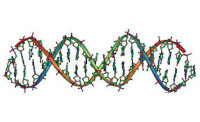Investigation on Ratios of Some Common Diseases and Health Risks Relating to Dioxin Exposure in Da Nang, Vietnam
Main Article Content
Abstract
Agent Orange (AO)/dioxin has potent, long-term, and serious effects on human health. It is capable of all parts of the body, causing cancer and diabetes; damaging the skin, liver, thyroid, immune system, respiratory system, circulatory system, digestive system, endocrine system, nervous system, cardiovascular system, and lungs; and causing mutations in genes and chromosomes, thereby causing birth defects and reproductive complications. This study aimed to analyze the status of disease patterns and health risks of people in Thanh Khe district (TK group) residing near areas where AO/dioxin was stored in Da Nang airport, compared with people in Son Tra district (ST control group), Da Nang city. This is a survey of 402 families residing in the TK group and 400 families residing in the ST group. Individuals in the age group 45–69 years accounted for a high proportion, of whom women accounted for the majority; the duration of residency was stable and long, typically more than 15 years in both groups. People in the TK group who had direct and indirect exposure to AO/dioxin accounted for a higher proportion than in the ST group. The incidence of some diseases that are thought to be related to AO/dioxin exposure, were hypertension (33.6%), diabetes mellitus (8.96%), and other diseases such as those of the stomach (23.0 %), joints (40.3%), ear/nose/throat (11.2%), and urinary system (7.21%) compared with the ST group. Exposure to AO/dioxin has changed the disease pattern and increased some diseases in people residing near areas where AO/dioxin was previously stored.
Downloads
Article Details

This work is licensed under a Creative Commons Attribution-NonCommercial-NoDerivatives 4.0 International License.
How to Cite
References
Young AL. The history, use, disposition and environmental fate of agent orange. New York: Springer; 2009. 339 p.
Stellman JM, Stellman SD, Christian R, Weber T, Tomasallo C. The extent and patterns of usage of agent orange and other herbicides in Vietnam. Nature. 2003; 422(6933):681-687.
Minh NH, Boivin T, Canh PN, Son LK. Comprehensive assessment of dioxin contamination in Da Nang airbase, and its vicinities: environmental levels, human exposure and options for mitigating impacts. Interdisciplinary Studies on Environmental Chemistry - Environmental Research in Asia; 2009. 21-29 pp.
Aspeninstitute. Maps of heavily sprayed areas and dioxin hot spots. The Aspen Institute, 2020. https://www.aspeninstitute.org/programs/agent-orange-in-vietnam-program/maps-of-heavily-sprayed-areas-and-dioxin-hot-spots. Retrieved 01 August 2020.
USAID. Performance evaluation of USAID’s environmental remediation at Da Nang airport. Final evaluation report. United States Agency for International Development. 2018.
Sau TK, Truong NX, Tuyet Hanh TT, Hung BL, Thang ND, Anh LTL. Ambient air monitoring around the dioxin remediation site in Da Nang, Vietnam, using passive air samplers. Environ Monit Assess. 2021; 193(7):434.
Tuyet-Hanh TT, Minh NH, Vu-Anh L, Dunne M, Toms LM, Tenkate T, Nguyen Thi MH, Harden F. Environmental health risk assessment of dioxin in foods at the two most severe dioxin hot spots in Vietnam. Int J Hyg Environ Health. 2015; 218(5):471-478.
Todaka T, Hirakawa H, Kajiwara J, Hori T, Tobiishi K, Yasutake D, Onozuka D, Sasaki S, Miyashita C, Yoshioka E, Yuasa M, Kishi R, Iida T, Furue M. Relationship between the concentrations of polychlorinated dibenzo-p-dioxins, polychlorinated dibenzofurans, and polychlorinated biphenyls in maternal blood and those in breast milk. Chemosphere. 2010; 78(2):185-192.
Tai PT, Nishijo M, Kido T, Nakagawa H, Maruzeni S, Naganuma R, Anh NTN, Morikawa Y, Luong HV, Anh TH, Hung NN, Son LK, Tawara K, Nishijo H. Dioxin concentrations in breast milk of Vietnamese nursing mothers: A survey four decades after the herbicide spraying. Environ Sci Technol. 2011; 45(15):6625-6632.
Boivin T, Minh HT. Evaluation of dioxin project impact to environment and people. Hatfield Consultants. 2015. 123 p.
Center for Health, Environment and Justice. America's choice children's health or corporate profit. The American people’s dioxin report. Technical support document. Center for Health, Environment and Justice, Falls Church, Virginia. 1999.
Da Nang City Portal. Population. https://www.danang.gov.vn/web/guest/gioi-thieu/chi-tiet?id=40958&_c=40. Retrieved 01 August 2020.
Bui TV, Blizzard CL, Luong KN, Truong NLV, Tran BQ, Otahal P, Gall S, Nelson MR, Au TB, Ha ST, Phung HN, Tran MH, Callisaya M, Srikanth V. National survey of risk factors for non-communicable disease in Vietnam: Prevalence estimates and an assessment of their validity. BMC Public Health. 2016; 16:498.
Institute of Medicine. Veterans and agent orange: Consensus study report. Institute of Medicine. 2014.
Minh NH, Tran TM, Minh Hue NT, Tu BM, Tuyet-Hanh TT. Bioaccumulation of PCDD/Fs in foodstuffs near Bien Hoa and Da Nang airbases: Assessment on sources and distribution. Environ Sci Pollut Res. 2019; 26(28):28852-28859.
Choi HM, Kim HC, Kang DR. Sex differences in hypertension prevalence and control: Analysis of the 2010-2014 Korea national health and nutrition examination survey. PLoS One. 2017; 12(5):e0178334.
Nordström A, Hadrévi J, Olsson T, Franks PW, Nordström P. Higher irevalence of type 2 diabetes in men than in women is associated with differences in visceral fat mass. J Clin Endocrinol Metab. 2016; 101(10):3740-3746.
Tran NN, Pham TT, Ozawa K, Nishijo M, Nguyen ATN, Tran QT, Hoang LV, Tran AH, Phan VHA, Nakai A, Nishino Y, Nishijo H. Impacts of perinatal dioxin exposure on motor coordination and higher cognitive development in Vietnamese preschool children: A five-year follow-up. PLoS One. 2016; 11(1):e0147655.
Tai PT, Nishijo M, Nghi TN, Nakagawa H, Luong HV, Anh TH, Nishijo H. Effects of perinatal dioxin exposure on development of children during the first 3 years of life. J Pediatr. 2016; 175:159-166.


